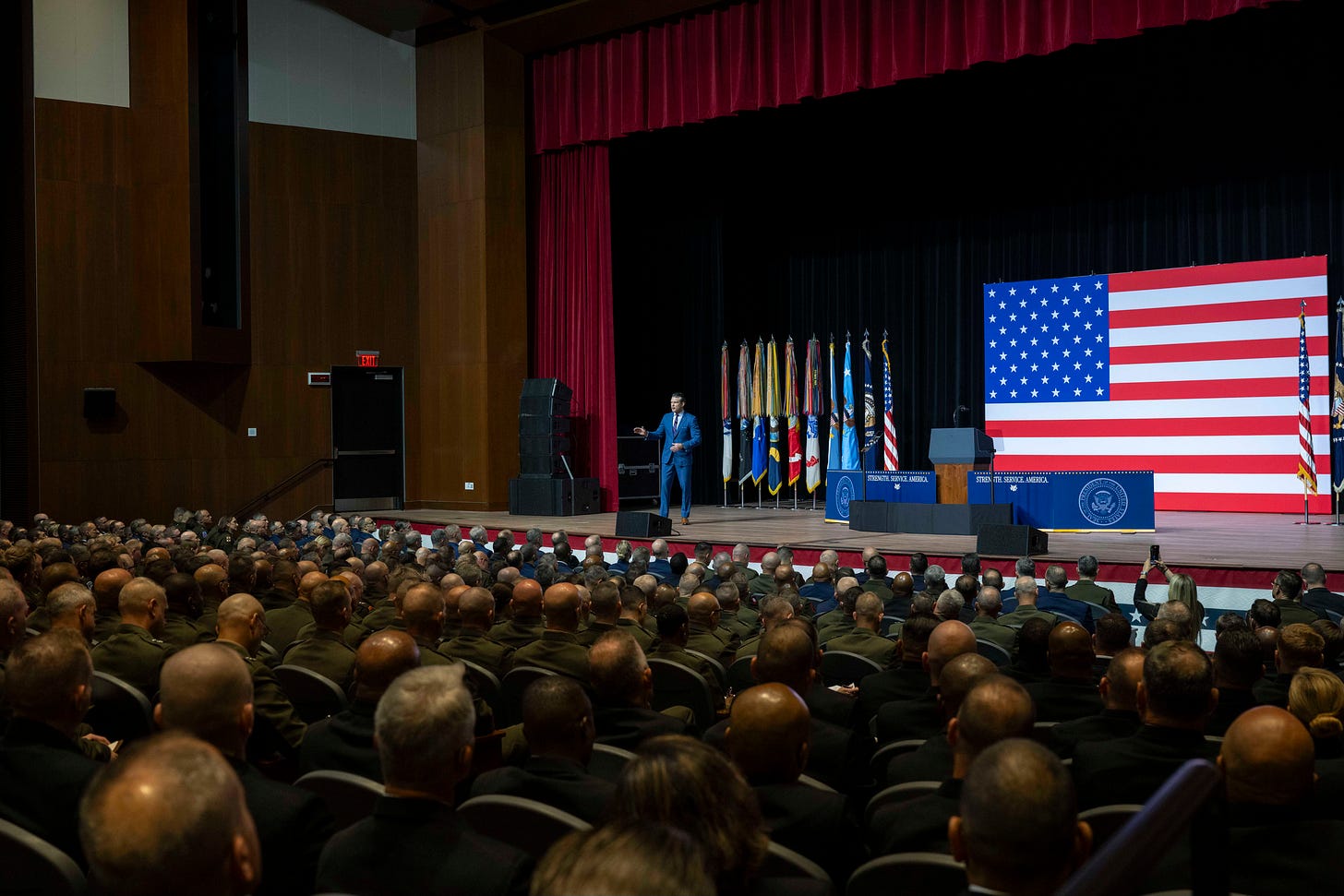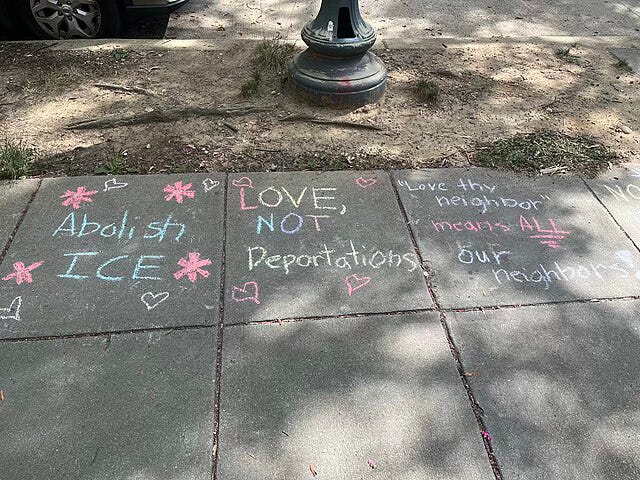The Politics of Fear and the Liturgy of Hope
From Military Theater to People’s Mass, Competing Scripts of Power

This morning President Trump stood before more than 800 generals and admirals at Quantico and declared American cities “training grounds” for the military. It was theater designed to showcase power and summon fear. Yet only days earlier in Chicago, Catholics marched toward a naval base singing “We are not afraid,” and in Washington Cardinal Robert McElroy asked Catholics to see the faces of migrants as neighbors. The contrast could not be sharper. Fear was on stage at Quantico. Hope was on the streets and in the pulpit.
President Trump summoned the gathering with Defense Secretary Pete Hegseth at his side. Together they railed against “woke garbage,” praised deportations, and described the military as once again the “Department of War” (Schmitt, Cooper, & McCreesh, 2025). It was not strategy so much as spectacle, with troops staged as props for grievance. Fear was the instrument.
Fear is not an accident of authoritarian politics. It is deliberate. Fear tells immigrants to stay home, critics to stay quiet, officers not to dissent. Fear makes survival itself feel like the highest good.
But hope contests fear.
In Chicago, two hundred Catholics walked toward the Great Lakes Naval Base singing hymns of courage. Heidi Schlumpf’s piece in Commonweal captured the scene: a bilingual People’s Mass, yellow T-shirts quoting Mary’s Magnificat, and banners reading “Blessed are the peacemakers, not the deporters” (Schlumpf, 2025). They knew the risks. ICE raids had already claimed lives. National Guard troops loomed. Yet they chose hope made public.

In Washington, Cardinal Robert McElroy pressed the same truth. Preaching for the World Day of Migrants and Refugees, he called the deportation campaign “a comprehensive governmental assault designed to produce fear and terror among millions of men and women” (Clarke, 2025). Against that assault he placed the Gospel’s most pointed question: Who is your neighbor? He named mothers, Marines’ fathers, and caregivers. Fear turns neighbors into categories. Hope insists on faces.
Research underscores how much is at stake. Studies show religious leaders can help communities resist extremism by redirecting fear into solidarity, as in Pakistan’s Swat Valley during the War on Terror (Ahmed, Hayat, & Yusufzai, 2021). Yet leaders can also exploit fear, framing threats that protect dominant group power (Lio, Facchini, & Deckard, 2008). McElroy and the People’s Mass embody the constructive role. Quantico’s theater models the destructive one.
Martha Nussbaum argues that overcoming fear-based intolerance requires expanding our moral imagination through empathy and consistent civility (Nussbaum, 2012). That is what McElroy attempted with the Good Samaritan. It is what the Chicago marchers did by singing. Authoritarian politics shrinks imagination. Prophetic hope expands it.
What unfolded in Chicago and Washington is not only religious witness but democratic practice. Public liturgy that names migrants as neighbors and insists “we are not afraid” is a form of pluralism in action. It creates space where diverse communities can stand together across language, race, and status, and it models a civic imagination where human dignity is the measure. That is the opposite of Christian nationalism, which fuses religion with state power to enforce exclusion. Where authoritarian religion seeks to collapse faith into a single partisan agenda, pluralist religion strengthens democracy by expanding empathy and enlarging who counts as neighbor.
Fear spreads quickly. Hope spreads slowly. Both are contagious. What happened at Quantico shows how fear operates by spectacle, projecting inevitability. What happened in Chicago and Washington shows how hope contests that inevitability, insisting the Gospel still has something to say when power demands silence.
Scripture repeats the command: do not be afraid. Not because danger disappears, but because courage is possible even in danger. Today at Quantico, fear was on stage. In Chicago and Washington, the Church offered another script. The question now is whether we will join it, and whether we will recognize our neighbors when they need us most.
Further Reading & Sources
Ahmed, M., Hayat, A., & Yusufzai, A. (2021). Role of religious leaders in countering violent extremism: A case study of Swat and Dir valleys. Review of Human Rights, 7(1), 67–81. https://doi.org/10.35994/RHR.V7I1.174
Clarke, K. (2025, September 28). As deportation terror mounts, Cardinal McElroy asks U.S. Catholics, ‘Who is your neighbor?’ America Magazine. https://www.americamagazine.org/politics-society/2025/09/28/mcelroy-migrants-deportations-homily-24998
Lio, S., Facchini, G., & Deckard, N. (2008). Status threat, moral rhetoric, and political mobilization. Sociological Inquiry, 78(1), 5–29. https://doi.org/10.1525/SI.2008.31.1.5
Nussbaum, M. C. (2012). The new religious intolerance: Overcoming the politics of fear in an anxious age. Harvard University Press. https://doi.org/10.5860/choice.50-2334
Schlumpf, H. (2025, September 24). Fear not: A People’s Mass outside Chicago brings the gospel message into the public square. Commonweal. https://www.commonwealmagazine.org/chicago-ice-immigration-peoples-mass-schlumpf-trump
Schmitt, E., Cooper, H., & McCreesh, S. (2025, September 30). Trump and Hegseth recount familiar partisan complaints to top military leaders. The New York Times. https://www.nytimes.com/2025/09/30/us/politics/trump-hegseth-military-officers.html


